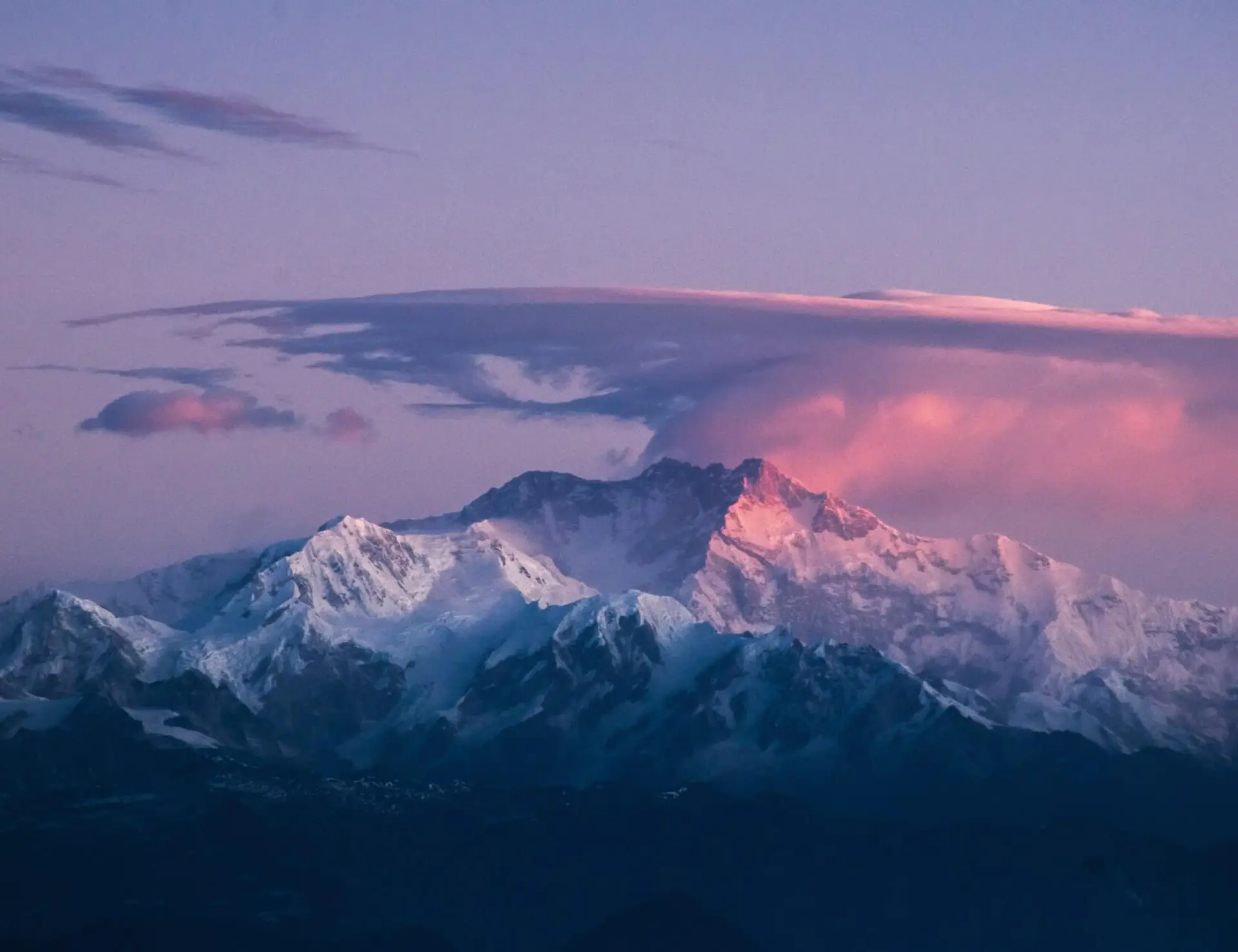Guided Arunachal and Assam Bike Tour
Join us for a lifetime cycling adventure in Arunachal and Assam that will leave you mesmerized! A great week of cycling awaits in Arunachal as we head northwards across the Mishmi Hills, a mountain range that acts as a transition between the Himalayas and the Indo-Burma mountains. The fauna and the geography alter drastically - from the tea estates of Assam to the forest near the base of Mishmi Hills. This is a trip that takes you through the land that is truly the Shangri-la of Asia. What makes Arunachal truly remarkable among all places on earth is the sheer diversity of its landscape packed into a few thousand square km – from perennially snow-covered mountains over 7000m high, to temperate woodlands to tropical rainforests, the geography and climate in Arunachal change dramatically every few hundred miles to make sure that no two days are alike on this cycling trip.
Another week if spent in Assam. Think Assam and the two things that come to your mind are rhinos and tea estates. And for good reason too. Assam after all is one of the last remaining refuges of the one-horned rhinoceros and is the single largest tea-growing region in the world. However, our Assam cycling tour takes you also to hidden nooks and crannies of this fabulous land that has been bountifully blessed with the triple gifts of nature, culture, and cuisine. From the unique cultural geography of Majuli, the largest river island in the world to walking the trail of critically endangered animals such as the Hoolock Gibbon and the Bengal Slow Loris, this is a trip on which each day is an exciting new adventure.
Guided
casual hotels
Dibrugarh | 17:00hrs
Guwahati
easy to moderate
61 km / 38 mi
9
Highlights
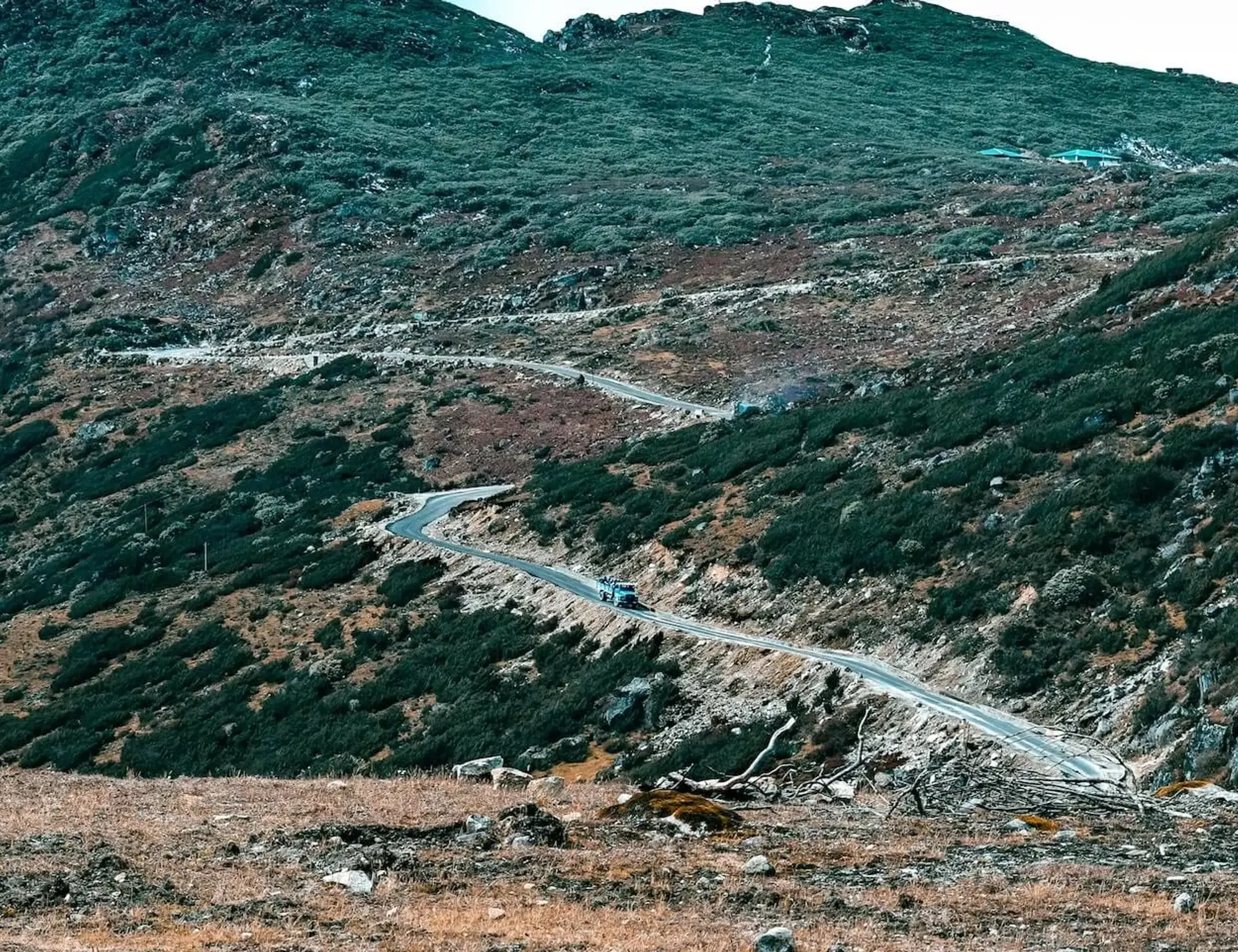
diverse landscape
Ride through a diverse landscape consisting of tea gardens, fields of colorful wild orchids, and rhododendrons.
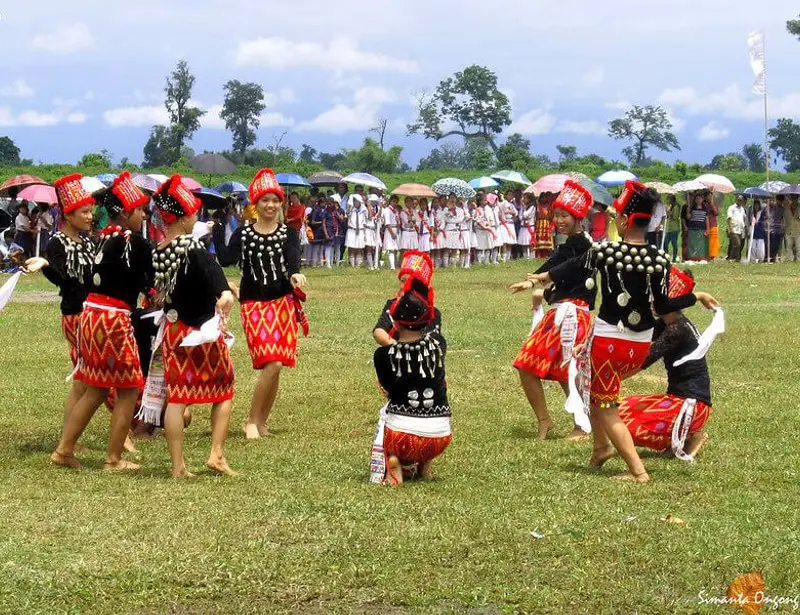
unique tribal culture
Experience the unique tribal culture, cuisine, and lifestyle of the various tribes of the region such as the Singpho, Mishmi, and Khampti.
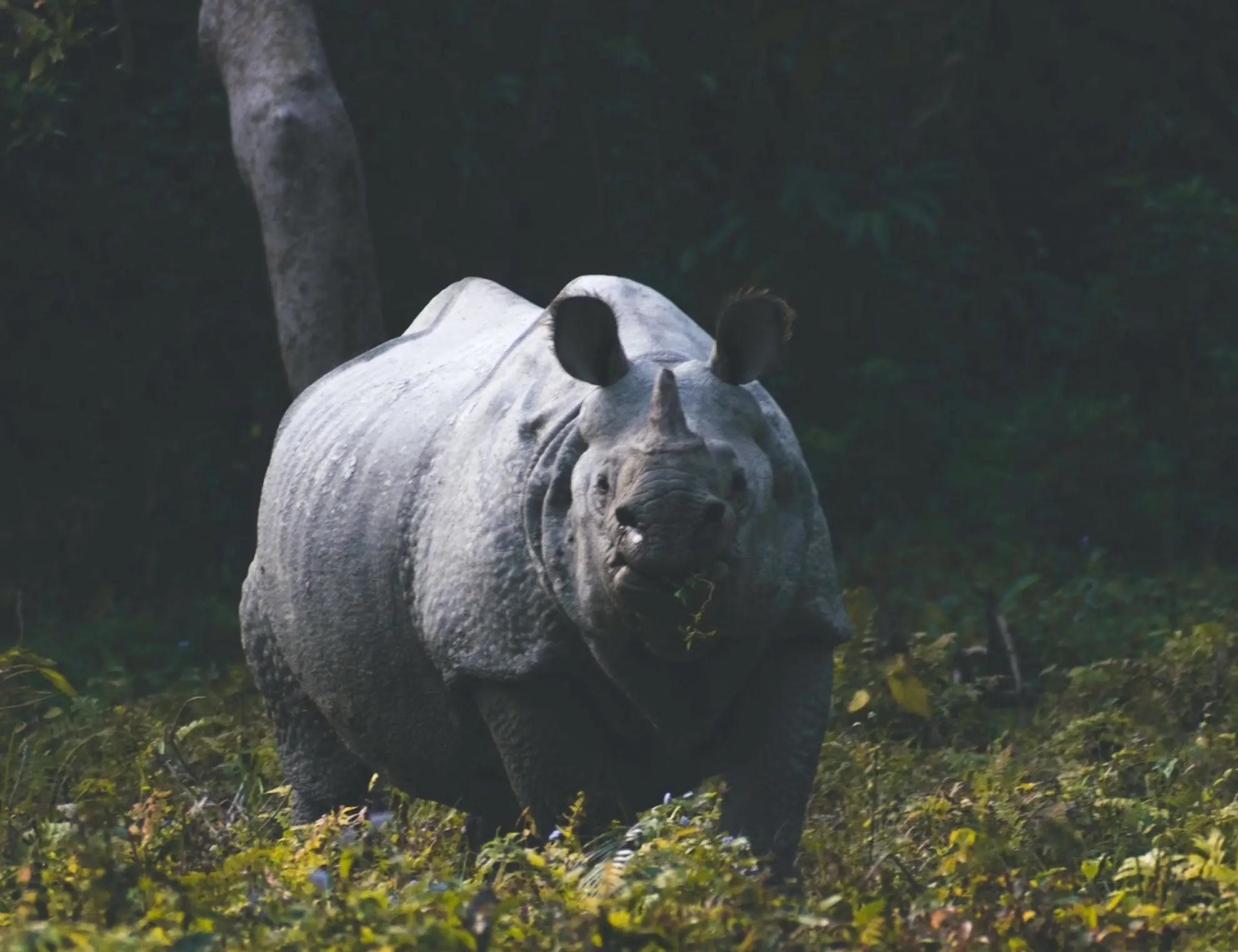
Kaziranga National Park
Visit the Kaziranga National Park, home to the largest population of one-horned rhinoceros in the world.

rarest animals
Get a chance to spot some of the rarest animals on the planet such as the Hoolock Gibbon and the Bengal Slow Loris.
Itinerary
Brief Itinerary
Meals are indicated as B = Breakfast, L = Lunch, D = Dinner.
Listed hotels are subject to availability and may be replaced with similar alternatives of equal standard.
| Day | Place | casual Inns | Meals | Distance | Activity |
|---|---|---|---|---|---|
| DAY 1 | Dibrugarh | Pushkara Sarovar Portico | D | ||
| DAY 2 | Inthong | Singpho Eco Lodge | B,L,D | 70 km / 43 mi | cycling |
| DAY 3 | Namsai | Golden Pagoda Eco Resort | B,L,D | 80 km / 50 mi | cycling |
| DAY 4 | Roing | Mishmi Hill Camp | B,L,D | 70 km / 43 mi | cycling |
| DAY 5 | Roing | Mishmi Hill Camp | B,D | ||
| DAY 6 | Pasighat | Abor River Camp | B,D | 70 km / 43 mi | cycling |
| DAY 7 | Dibrugarh | Pushkara Sarovar Portico Dibrugarh | B,L | 50 km / 31 mi | cycling |
| DAY 8 | Majuli | Okegiga Homes | B,L,D | 70 km / 43 mi | cycling |
| DAY 9 | Jorhat | Thengal Manor | B,L,D | 40 km / 25 mi | cycling |
| DAY 10 | Jorhat | Thengal Manor | B,L,D | 40 km / 25 mi | cycling |
| DAY 11 | Kaziranga | Resort Borgos | B,L,D | 60 km / 37 mi | cycling |
| DAY 12 | Kaziranga | Resort Borgos | B,L,D | ||
| DAY 13 | Guwahati | Dynasty Hotel | B,L,D | ||
| DAY 14 | Deaprture | B |
Detailed Itinerary
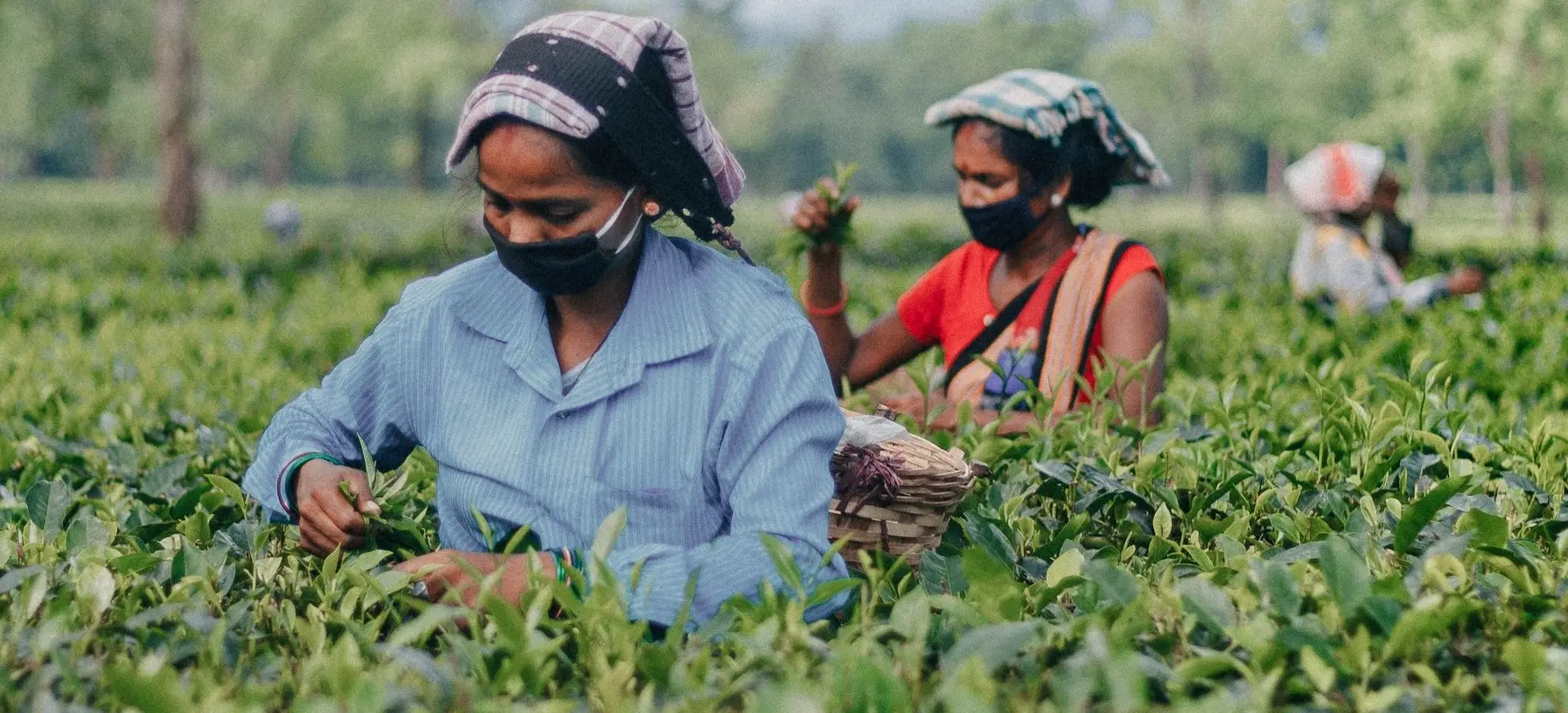
Day 1: Dibrugarh
Dibrugarh in the northeast corner of Assam is known as the Tea City of India as it is home to some 144 tea estates. We meet post-lunch to visit the Mancotta Tea Estate which is home to a gracefully restored 150-year-old property built in the traditional style of using stilts known as Changs. We get to learn more about the famous Assam tea here, observing at close quarters all the various operations from picking to packing that bring the world’s favorite beverage from tea estates to morning cups the world over. Assam is the largest single tea growing region in the world and its tea is unique, unlike in most other tea growing regions, Assam tea is not grown in highland areas but at or close to the sea level, giving it its malty taste and bright colors. We meet in the evening for a bike fit and a tour briefing. Tonight, our stay is at the Chowkidinghee Heritage Bungalow, an early 20th-century property built in colonial style and standing on the edge of a tea estate. Expect the sweet aroma of tea leaves to waft through the window first thing in the morning to wake you up refreshed for an exciting journey ahead.
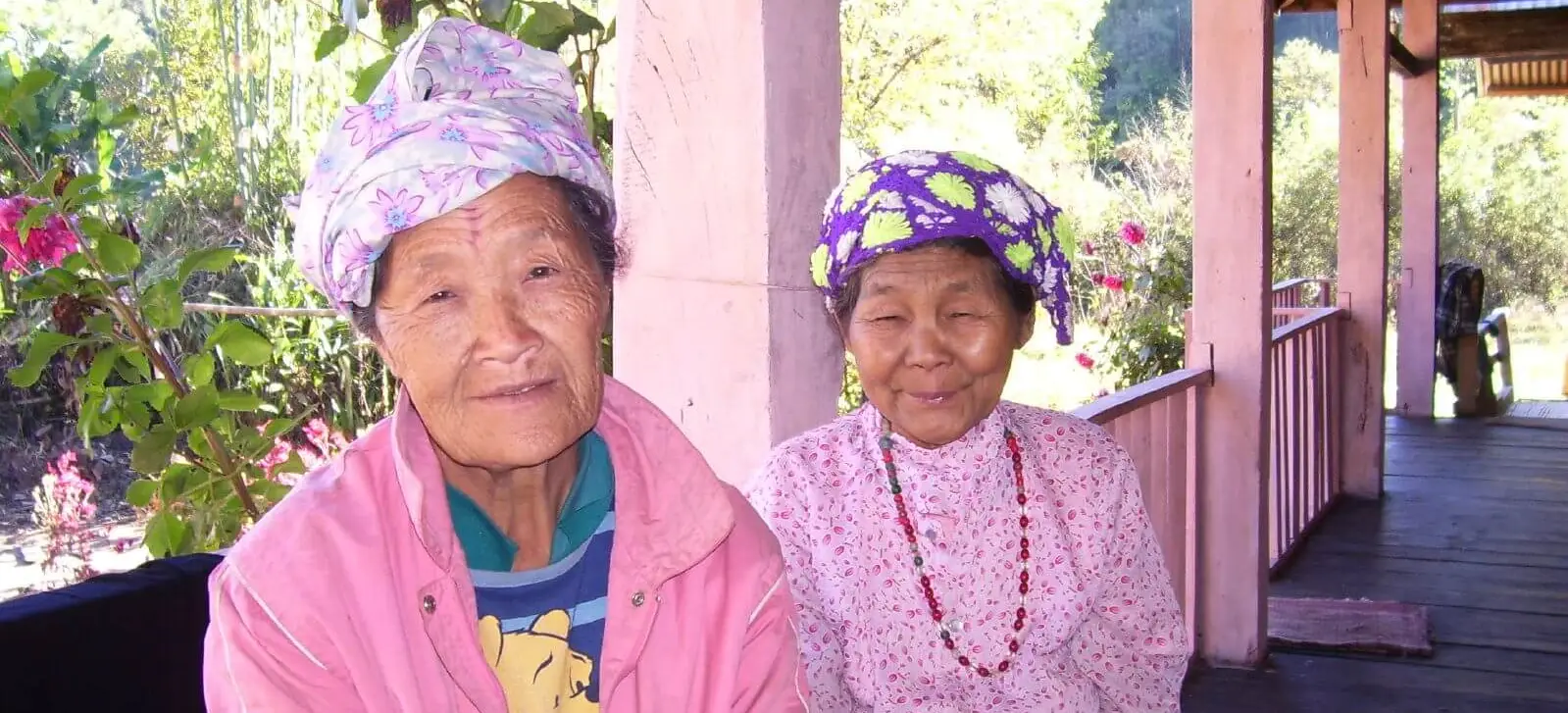
Day 2: Inthong
We begin the day’s cycling with a visit to Namphake village on the outskirts of Dibrugarh. This village is one of a kind as it is home to the Tai Phake people, a tiny community of only about 5000 in India most of whom are settled in this village. The Tai Phake migrated from Myanmar and Thailand in the 17th & 18th centuries and practice Buddhism. The town has a beautiful Buddhist monastery. As we bike along the languidly meandering Dihing river, we get to witness a curious geographical feature formed by the river’s meandering curves – oxbow lakes. Oxbow lakes are horseshoe-shaped lakes formed by the meandering path of rivers with a wetland at their center. The Dihing river forms a beautiful oxbow lake at Sasoni Merbil, an ecotourism spot that is a birder’s paradise. The terrain remains flat for the most part.
We continue riding to Inthong, a village close to the Assam –Arunachal Pradesh border. Inthong is a tea-growing region, and our stay for the night, the Singpho Eco Lodge is situated among lush green tea gardens. The Singphos are a tribe found across Myanmar, China, and North-east India, known for their fighting skills, herbal healing, craftsmanship, and hospitality. The Singpho eco-lodge is a spacious property with rooms built in the traditional style on stilts, using locally available materials such as bamboo and timber. While at the lodge, don’t miss traditional Singpho cuisine. We especially recommend a local tea known as Phalap that is grown by the Singpho people in their own gardens without the use of any chemical fertilizer or pesticide. The tea leaves are processed by frying them and stuffing them in bamboo hollows, and allowing them to dry slowly in wood-fired kitchen ovens over a period of three months. Because of the long processing time, the Phalap is rarely sold in commercial quantities and is considered more of an emotional artifact close to Singpho culture than a commercial enterprise. We raise a cup of the finest Phalap tea as a befitting toast to the beginning of an exciting journey of adventure and discovery.

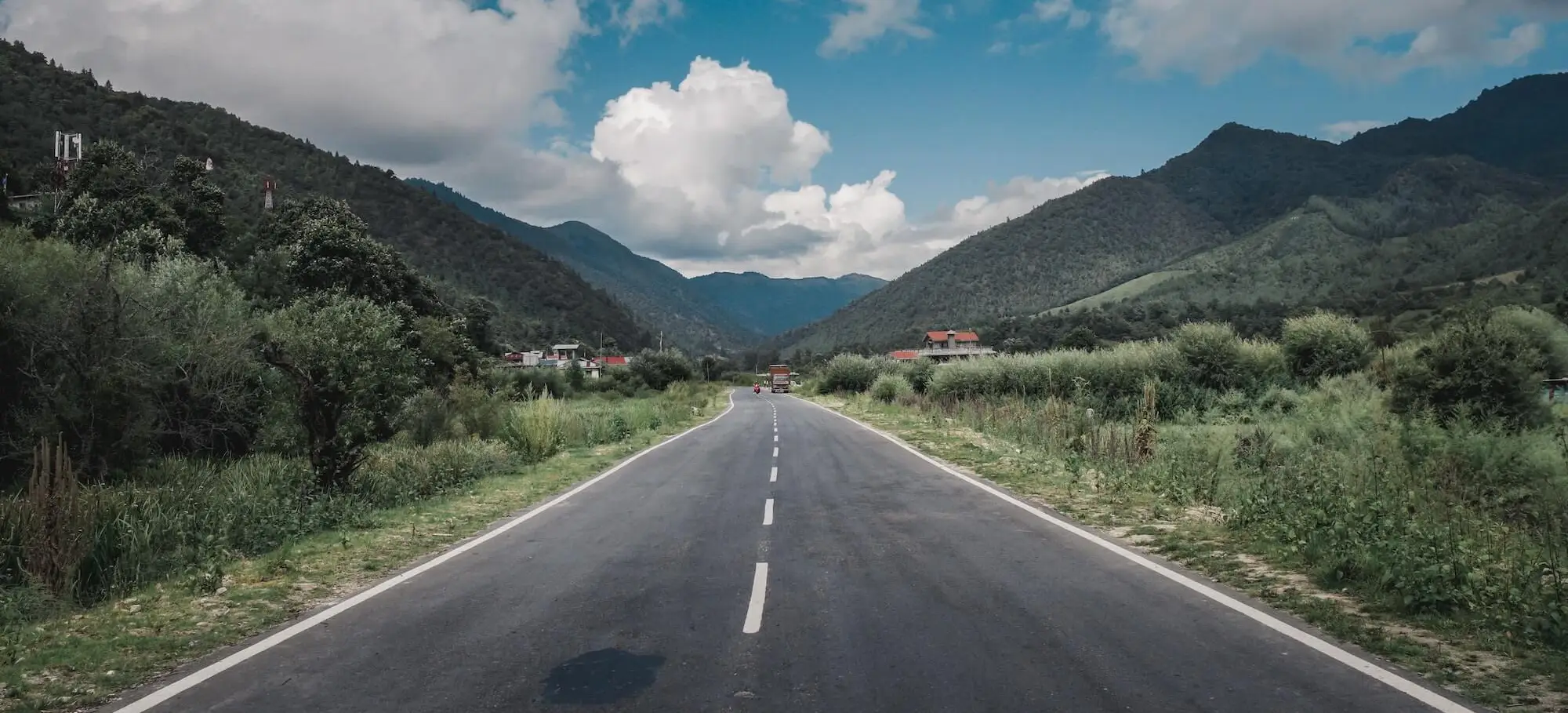
Day 3: Namsai
Today we enter Arunachal Pradesh and begin cycling due east. We cross the Dihing river and cycle through the historical town of Ledo, the easternmost railway station in India, and the starting point of the historical Ledo road – a 1726 km road built by the Allies during the Second World War to connect Ledo to Assam to China. Constructed under the supervision of General Joseph Stilwell of the US Army, the Ledo road was the lifeline that allowed the Allies to send supplies to China as it was being overrun by Japan.
We stay tonight at the Golden Pagoda eco-resort, which has charming wooden cottages spread atop a hillock overlooking the Tenga Pani river and surrounded by pristine forests. Looming large over the resort is the awe-inspiring Kongmu Kham or the Golden Pagoda, a Buddhist temple built in the Myanmarese style. In the evening, we pay a visit to the temple.


Day 4: Roing
A great day of cycling awaits as we head northwards across the Mishmi Hills, a mountain range that acts as a transition between the Himalayas and the Indo-Burma mountains. The fauna and the geography alter drastically through the ride today - from tea estates to the forest near the base of Mishmi Hills. We experience the colorful lives and livelihoods of the Mishmi people who inhabit this region.
We continue riding due north across the mighty Lohit, a powerful, swift-flowing river originating in Tibet that is a major tributary of the Brahmaputra river. The Lohit is also known as the river of blood because of the high levels of lateritic soil that it brings down from the Mishmi hills. Wild orchids and rhododendrons bloom along its fertile banks. Once across the Lohit, we enter the Himalayan foothills and ride past low-rising mountains and fields of wild orchids to reach Roing, the last major township along India’s north-eastern frontier.
Roing is located on a watershed where the Brahmaputra, entering India from Tibet, takes a south-westerly bend, offering great views of the Himalayas on one side and the mighty Brahmaputra on the other. We stay tonight at the Mishmi Hills Camp, a quaint resort nestled among low hills and overlooking the Eze river, a frolicking, dancing stream that joyously goes on to meet the Brahmaputra a few km downstream. The cheerful energy of the gushing Eze river will wash over you as you look back on a wonderful adventure that comes to an end over a traditional Mishmi dinner, and under a starlit north-eastern sky.

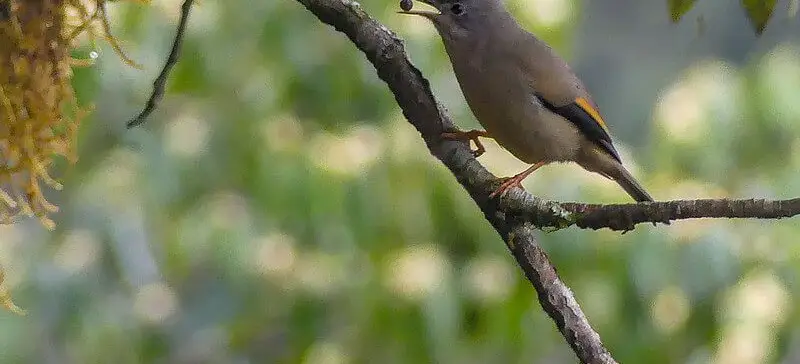
Day 5: Roing
Today you can plan your own day. Spend the day reading a book right next to the Siang river or go for a birding tour in Mishmi Hills, a heaven for bird watchers, with a local guide.

Day 6: Pasighat
This is an exciting riding day as we cross the Siang river to head west towards our eventual destination, Pasighat. The flora consists of sub-tropical vegetation such as bamboo forests and betel nut trees. The Siang river flows through the dense forests with the Mishmi hills in the backdrop presenting a picture postcard setting to the day’s ride.
We stay for the night at the Abor River Camp, located on the banks of the might Siang.

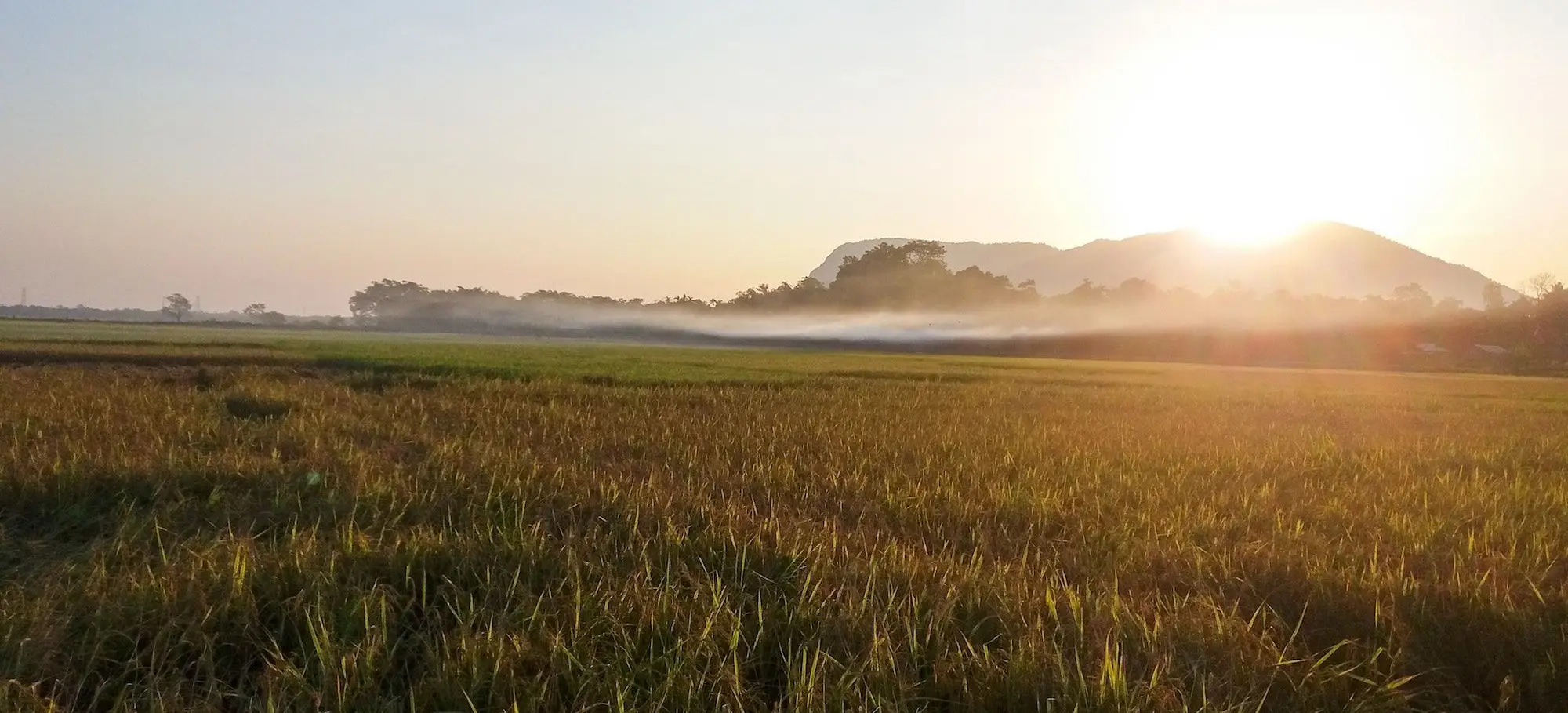
Day 7: Dibrugarh
Today we head back to Dibrugarh. We start riding through the interior tribal villages of Arunachal over undulating terrain with the Brahmaputra river as our constant companion. With over 77% of its land area under tree cover, Arunachal is home to some of the last untouched forests in India, and indeed the entire world and you can appreciate those nuances on today's ride. Later we shuttle back to Dibrugarh and get ready to bike Assam for our next phase of the cycling holiday.
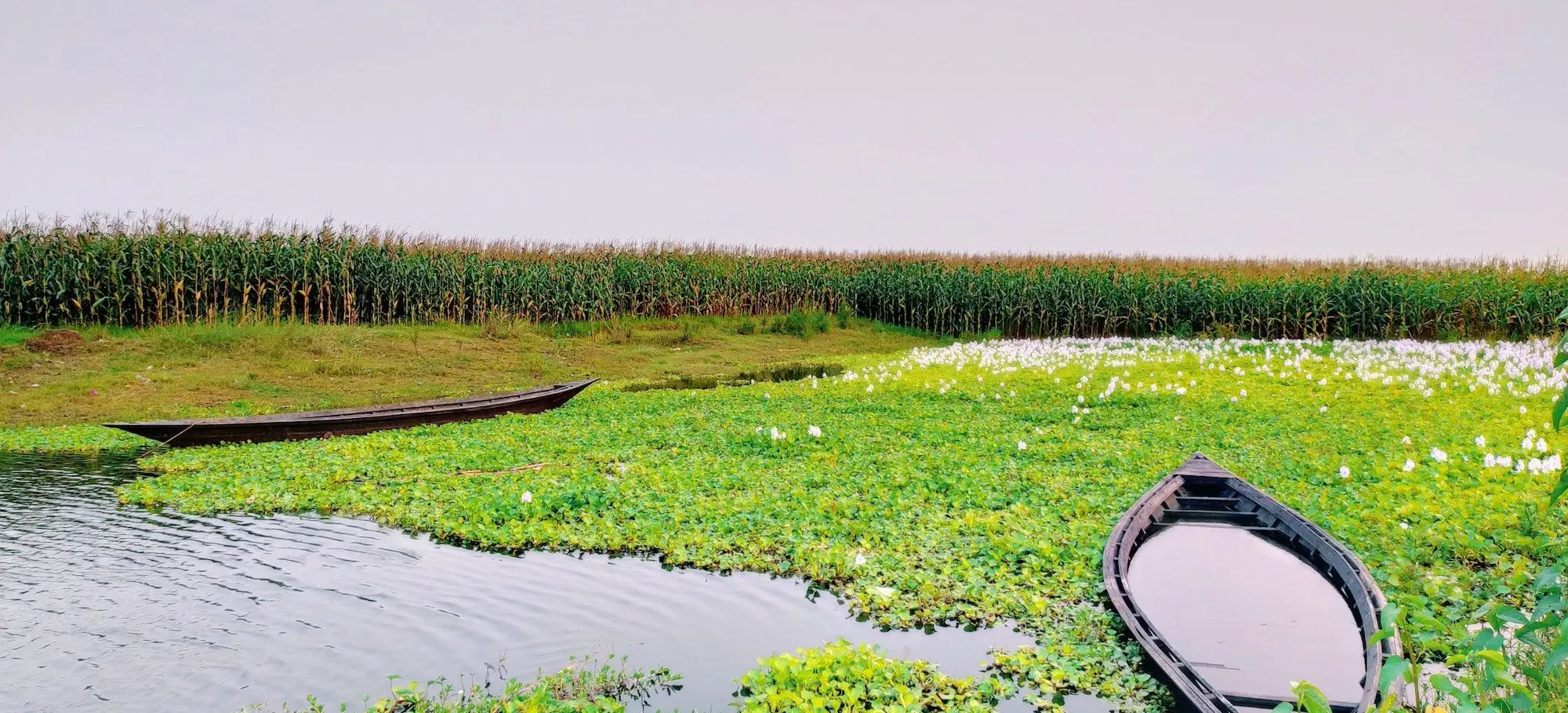
Day 8: Majuli
Today is a day of experiencing wonders, natural and man-made, that can only be described in superlatives. We ride out due south-west towards Majuli, the largest river island in the world. We get there by crossing the Bogibeel bridge, the longest rail-cum-road bridge in India. The Brahmaputra – the 9th largest river in the world by discharge – shall be our constant companion from here on. The Brahmaputra is the only river in India that is regarded as male and as we cross its mighty sweep, we get to appreciate why. The Majuli island is approachable only by boat and we ride in one to explore the island’s unique geography and culture. Life in Majuli is laid back, as is expected of a place cut off from the rest of the world by a powerful and ferocious river. Stay tonight is at Okegiga Homes. A charming bamboo cottage built on stilts in the local style, this simple yet delightful property lives up to its name.

Day 9: Jorhat
We start the day with a boat ride in the Brahmaputra river. A unique feature of Majuli’s cultural life is the presence of Vaishnavite monasteries that bind the society together with their distinctive rituals and customs. Their mode of worship includes expressing their devotion through dance and drama in vivid colorful costumes that present a striking spectacle. Post lunch, we begin the day’s cycling. We head south this day towards the city of Jorhat. Once again, we cross the mighty Brahmaputra and feel overwhelmed by its sheer presence. Jorhat is an important cultural and urban center in Assam. We stay tonight at the Thengal Manor, a heritage property built in 1929 by an affluent Assamese planter family. The property is situated 15kms from the city of Jorhat in the midst of verdant tea gardens. Since tea plantations are the lifeline of Assam, and tea planters the region’s aristocracy, the Thengal Manor offers you a glimpse into what it is like to live the planter’s life. With its colonial architecture, antique wooden décor, charming fireplaces, and sprawling gardens, the Thengal Manor is sure to make you feel like an aristocrat yourself.
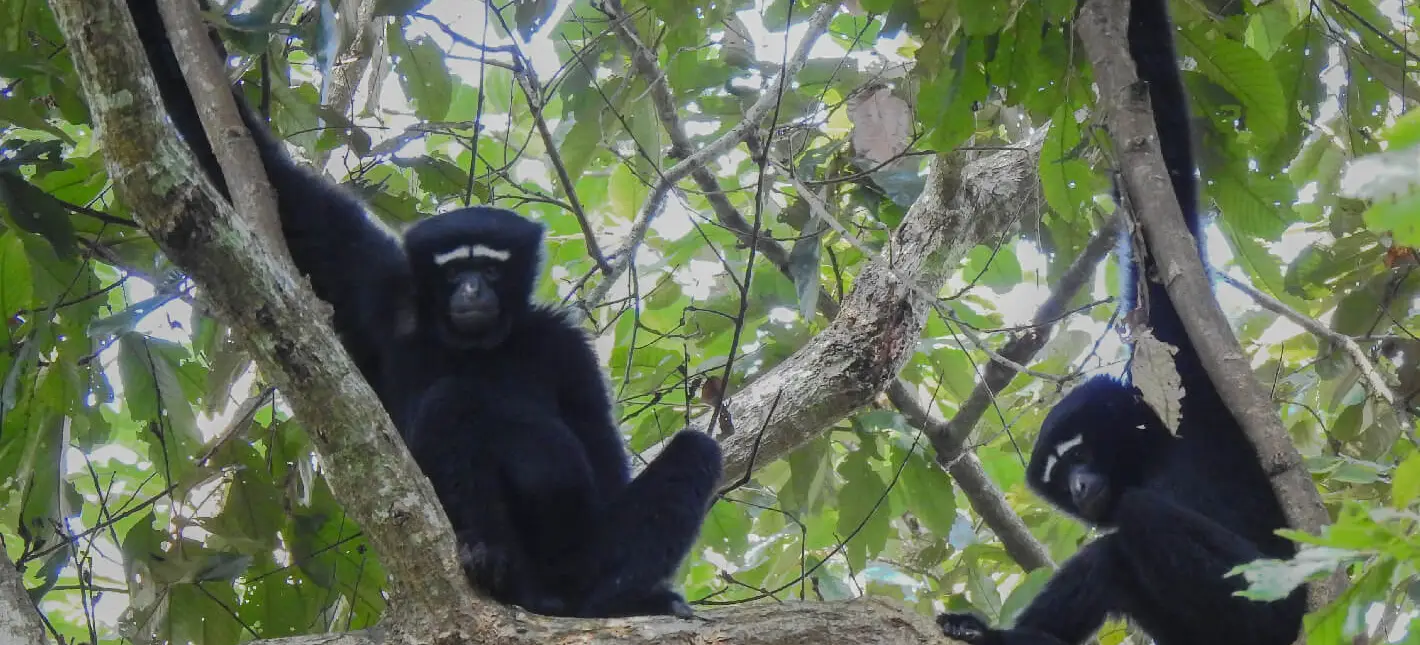
Day 10: Jorhat
Today we ride out to the Hoollongapar Gibbon Sanctuary, a verdant forest of canopied evergreen trees that is home to two critically endangered animals - the Hoolock Gibbon and the Bengal Slow Loris. The Hoolock Gibbon is the only species of ape found in India and is concentrated mostly in Assam. It is considered one of the most endangered primates with only 5000 individuals surviving in the world. The Bengal Slow Loris is another threatened species found in this forest, though being nocturnal, it is hard to spot. In addition, the sanctuary is home to various other threatened animals such as the Assamese macaque, tigers, and wild elephants. With its beautiful Hollong and Nahar trees forming dense canopies, the sanctuary is a tropical paradise. We take a motorized Safari inside the sanctuary.

Day 11: Kaziranga
Today we head out in a westerly direction, riding parallel to the Brahmaputra, towards Kaziranga. Kaziranga is famous the world over as the home of the one-horned rhinoceros. It is a reputation well-earned. With 2413 rhinos, Kaziranga is home to two-thirds of the world’s one-horned rhino population. It is also home to the densest tiger population of any protected area in the world, besides hosting wild elephants, wild buffaloes, and the Gangetic dolphin. Of the 35 mammal species found in Kaziranga, 15 are on the IUCN red list of threatened animals. A vast expanse of marshland, elephant grass, and tropical rainforests crisscrossed by 4 rivers and populated with some of the most fascinating beasts on earth, Kaziranga is everything you ever imagined a wildlife safari to be. Today’s ride takes us through numerous tea plantations and beautiful Assamese villages.
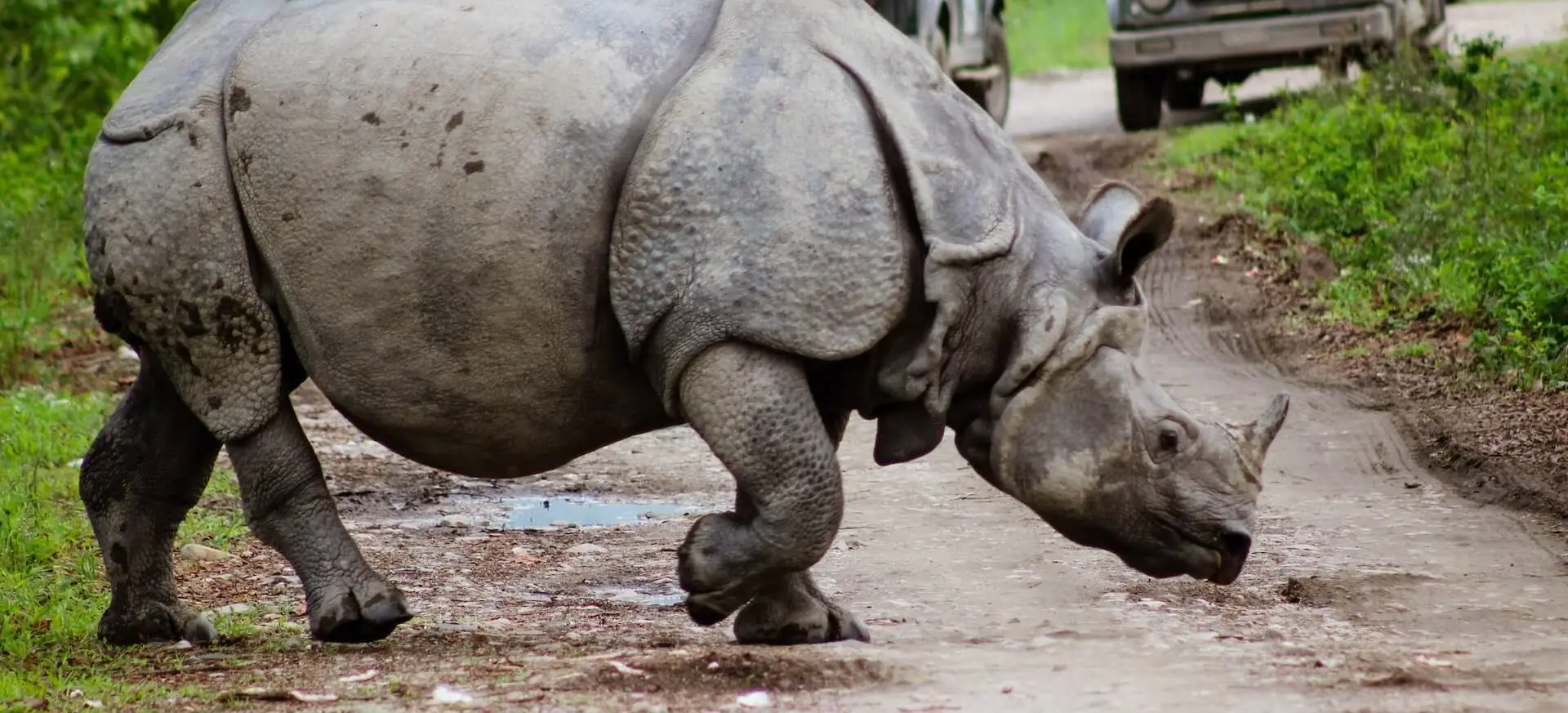
Day 12: Kaziranga
This day we give our bikes a rest to explore the beauty of Kaziranga. We begin the day with an early morning guided safari into Kaziranga keeping our fingers crossed for our tryst with the park’s most famous inhabitant, the one-horned rhino. We return to our hotel for lunch. In the evening we return again for a safari into Kaziranga to see more of its amazing wildlife.
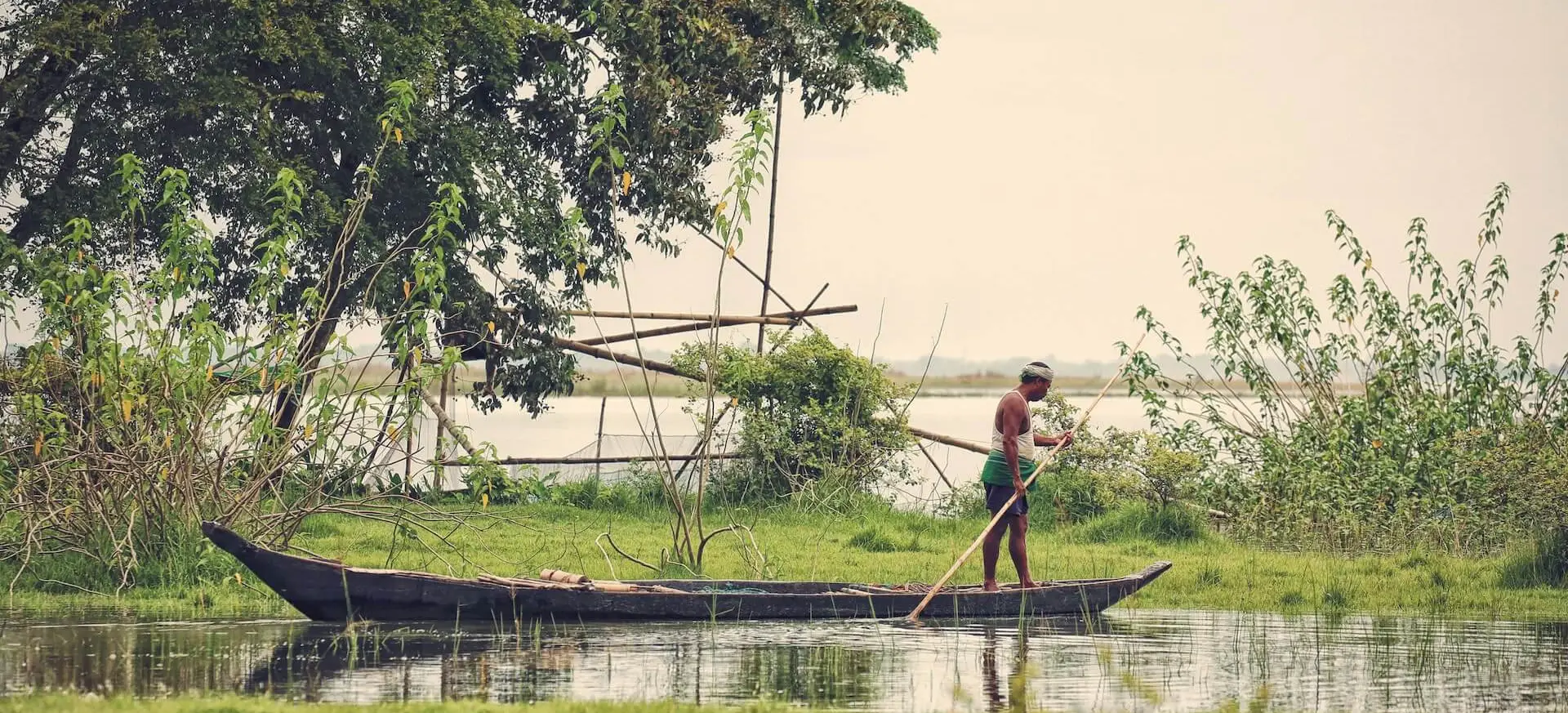
Day 13: Guwahati
We shuttle to Guwahati which is connected by rail and air to all major Indian cities.
Day 14: Deaprture
Extend here or depart as per your onward travel plans.
Ready to plan your adventure? Download a print-ready detailed itinerary.
Map
Dates and Prices
Book with Confidence: For scheduled group departures, your 20% deposit is fully refundable until 60 days before departure. Solo travellers booking 120+ days in advance can avoid a mandatory Single Supplement. See terms & conditions.
Couldn't find a trip with convenient dates?
Open your date as a join-in tour or customize further as a private one.
Essential Info
Inclusions
LODGING
All hotels as mentioned in the tour details or similar (subject to availability).
trip leader
Expert Trip Leader(s) who look after your every need and add meaning to your vacation.
bike
Immaculately maintained bike with helmet, suited to a terrain.
shuttle
A Van support follows the group of riders and carries all belongings.
meals
Meals as per itinerary. Guests are given the opportunity to dine on their own so that they discover a location independently.
refreshments
Refreshments and mineral water during activity.
entrance
Entrance fees to most of the monuments and temples.
Exclusions
Beverages
Beverages such as alcohol, tea, coffee, juice at a hotel or restaurant.
Gratuity
Gratuities for your guide team are not included in the trip price.
Arrival & Departure Details
Arrival
Your tour begins in Dibrugarh, Assam, which has a small domestic airport with direct flights from the national capital Delhi. If you are flying in from other cities such as Mumbai, you may get a connecting flight.
From the airport, you can take a cab to arrive at your hotel.
All major airports in India have prepaid taxi cab booths located inside the airport itself. These are typically situated just before the exit gate of the terminal. You can book a prepaid taxi cab from this booth.
Departure
The tour ends in Guwahati, the capital of Assam. Guwahati has a domestic airport. You can book a cab from your hotel itself to arrive at the airport.
What to Pack
Packing smart is essential for a safe and enjoyable cycling adventure. From essential biking gear to clothing and travel necessities, this guide ensures you're prepared for any terrain or climate.
Recommended Bicycling Clothes & Gear
- Bicycling shoes or stiff-soled sneakers.
- Padded cycling shorts.
- Short-fingered cycling gloves (personal gloves are ideal).
- Brightly colored cycling jerseys or synthetic T-shirts for visibility.
- Synthetic cycling socks.
- Sunglasses with UV protection.
- Personal helmet (recommended even though provided).
- Personal saddle (optional for added comfort).
- Rain jacket or windbreaker.
- Cycling water bottle (to reduce plastic waste).
Note: Helmets, gloves, and water bottles are personal items, so bringing your own is recommended for maximum comfort and hygiene.
Clothing
- Light, breathable fabrics like cotton or linen.
- Full-sleeved clothing for sun protection.
- Warm layers for chilly mornings and evenings (if traveling in winter).
- Comfortable footwear for non-cycling time.
- Bring a compact rain jacket in case of sudden weather changes.
- Ethnic or modest clothing for exploring towns and temples.
Other Necessities
- Toiletries: Basic hygiene essentials, including insect/mosquito repellent and sunscreen.
- Hand sanitizer and wet wipes.
- Plug socket adaptor.
- Binoculars for wildlife spotting or desert landscapes.
Pro Tips
- Pack light but plan for the varying temperatures: warm days, chilly evenings, and desert winds.
- Use brightly colored clothing for visibility on roads.
- Pack light to leave room for shopping.
Luggage
Please limit your luggage to one medium-sized suitcase and one carry-on bag. Mark your luggage with your name, address, and phone number.
Visa Information
Before venturing on your adventure, make sure you're equipped with essential travel advice, including security updates, local laws, and crucial passport and visa information. Start by visiting the official government website of your home country for accurate and reliable guidance:
- UK Residents: Stay informed by reviewing the Foreign, Commonwealth & Development Office (FCDO) Travel Advice.
- US Residents: Access vital travel tips and updates through the US Department of State Travel Advice.
- Australian Residents: Plan ahead with the latest updates on the Smart Traveller website.
- Canadian Residents: Find comprehensive travel and visa guidance on the Government of Canada's Travel Advice and Advisories.
- New Zealand Residents: Get practical travel advice on the New Zealand SafeTravel website
- Residents of Other Countries: Check with your government or local consulate for tailored travel advice and requirements.
Note: Passport and visa regulations can change at any time. Stay proactive by checking for the latest updates to ensure a smooth and stress-free journey.
Insurance
Medical insurance that covers medical costs in case of an accident during the trip is mandatory to participate in our tours.
We recommend to purchase adequate travel insurance in order to participate in our tours and protect yourself from unforeseen events. Our experience shows that guests who purchase travel insurance—including coverage for all activities on the itinerary, trip cancellation, interruption, delay, baggage damage, loss or theft, personal accident, death and repatriation costs, medical and emergency expenses (including Covid-19), and personal liability—travel with greater peace of mind.
Is proof of medical insurance required?
Yes. You must provide your insurer's name, policy number, and emergency contact via our reservation form. This is mandatory. If you cannot provide proof, you’ll need to purchase insurance before traveling with us.
Can I use my credit card insurance?
Yes, as long as it meets our requirements and provides adequate coverage. Ensure you have an emergency contact number and policy number available.
When should I buy travel insurance?
Purchase travel insurance as soon as you've paid in full or booked your flights.
Does Art of Bicycle Trips sell travel insurance?
We do not sell travel insurance directly, as we believe our customers should have the freedom to choose a policy that best suits their needs. However, we recommend Insured Nomads as a great starting point.
Frequently Asked Questions
A guided bike tour includes a professional local guide who rides with you throughout the trip. The guide handles navigation, manages daily logistics, ensures safety, and shares cultural insights. In addition to the guide, you also have a support vehicle that transfers luggage, provides water/snacks, and offers on-route assistance or a lift whenever needed. You simply follow the guide and enjoy a fully supported experience.
Your guides are local cycling experts, fluent in English, with deep knowledge of the region’s history, culture, and food.
On our guided tours, we ensure you begin your ride feeling comfortable and well-supported. Your guide and local team play an active role in getting your bike properly set up.
Before Your Tour
When you book, we ask for your height. This allows our local partners to select the correct frame size and prepare the bike in advance so it’s close to your ideal fit when you arrive.
At the Start of the Tour
You’ll receive a full in-person bike fitting with your guide or local representative. This typically includes:
- Adjusting saddle height
- Moving the saddle fore–aft (small adjustments to move the saddle forward or back for better balance and comfort)
- Fine-tuning handlebar height and reach (where adjustable)
- Confirming pedal preference — flat pedals are provided by default. If you bring your own clip-in pedals, our guide will help install and adjust them
- A short test ride to check comfort
Your guide will ensure everything feels right before the tour begins.
During the Tour
Throughout the trip, your guide will make additional adjustments whenever needed. This is especially helpful if you discover new comfort preferences after a few hours of riding.
What to Expect
Our guided tour bike fitting is hands-on, comfort-focused, and practical, ensuring you ride safely and enjoyably each day. It’s not a detailed workshop-level fit, but it covers all essential adjustments for multi-day touring.
Our support vehicle is always close by to make your ride worry-free. It carries your luggage, water, snacks, and spare parts, and is there if you need a quick lift or just want to rest for a while. You’ll see it at regular intervals along the route and during meal or refreshment stops. The vehicle is also used for scheduled transfers and to ensure safety and comfort along the route.
For guided tours, we do not provide GPX files separately, as navigation is handled by your guide. On certain occasions, if you prefer more independence, we may offer app-based navigation access with the daily routes loaded. However, please understand that this may not always be possible and depends on the specific tour setup.
Airport transfers are not included unless specifically mentioned in your trip inclusions.
For airport pickup, we recommend booking directly from the airport upon arrival — most airports have reliable taxi, shuttle, or app-based options.
For airport drop, please book a transfer through your last hotel — they can easily arrange it for you.
We focus on delivering exceptional experiences during your tour. For logistical simplicity and flexibility, we do not handle pre- or post-tour hotel bookings. However, we’re happy to share a list of recommended hotels near the starting and ending points of your trip so you can plan your stay independently.
The fitness level required for each trip is indicated by the "level" of the tour, which in turn is mentioned on each tour page right next to the price and the trip duration.
Easy: The terrain is mostly flat with a few gentle climbs.
Moderate: The terrain is either mostly flat or consists of rolling hills with a few challenging climbs. There could also be a few days with longer riding distances of up to 75 kms (45 miles)
Difficult: The terrain is mostly hilly with strong elevation gains and/or has long days on the bike. Such trips are recommended for intermediate to advanced cyclists.
Please note that we usually bike around 4-5 hours per day irrespective of the level of the trip.
Yes, your trip leader will carry bottled water or RO water in a camper in the support van for guests' use.
Here are a few tips to avoid getting Delhi Belly while doing this bike tour:
- Always wash your hands before eating anything, even light snacks.
- Do not drink tap water. Drink only bottled water provided by your trip leader or by the hotel/restaurant you're staying or eating in. When buying bottled water from outside, check for seal and the brand. Avoid using ice, since ice is often made from tap water. Soda water, however, is usually safe.
- Avoid eating salads and cut fruits. Peeled fruits such as bananas and oranges are fine.
- Cooked food that is freshly prepared is usually safe to eat. Restaurants and eating joints that are busy are usually safer as the food is fresh and they rarely have anything refrigerated overnight.
Yes, please communicate your dietary preferences to your trip leader and they'll ensure that the food you eat is spiced as per your requirements.
Yes — we do our best to support all dietary requirements. India is one of the most vegetarian-friendly countries in the world, and vegetarian meals are widely available across most regions. However, vegan and gluten-free options can vary, especially in smaller towns or rural areas where dietary terms may not be widely understood.
If you follow a strict vegan or gluten-free diet, we recommend carrying a few essential staples to ensure consistency throughout the trip.
Please inform your tour guide at the start of the tour, and we will make every effort to arrange suitable meals and help you source appropriate supplies from local markets or stores whenever possible.
We are happy to pass on your room preference for a twin or double setup, and our hotel partners do their best to accommodate these requests. However, room configurations are always subject to availability at each property.
On some of our trips—especially those that travel through remote regions or small boutique inns—room types may be limited. In such cases, despite our best efforts, you may need to stay in a double room instead of a twin, or twin instead of a double, depending on what is available.
Given the nature of our journeys and the unique places we visit, we kindly ask for your understanding and support if such adjustments are required.
We will always inform you in advance wherever possible and work closely with our partners to ensure the most comfortable arrangement for your stay.
The road surface is mostly good. 90% of the cycling on this bike tour happens on paved roads.
We've designed this itinerary such that most of the cycling happens on quieter countryside roads far from busy traffic. The shuttle transfers on this tour have been strategically planned to bypass busy vehicular traffic.
We are not medical advisors, and as such are not qualified to dispense medical advice. However, we recommend consulting the resources below for advice on vaccines and medications:
- CDC portal for travelers from the US
- NHS' Fit For Travel portal for travelers from the UK
- Smart Traveller portal or travelers from Australia.
In addition to the above, you may also refer to the travel advice issued from time to time by your government.
We generally avoid regions which are prone to outbreaks of malaria and dengue. However, as a preventive measure, you may carry mosquito repellant, and wear full-body clothing.
Consult your medical advisor for any pre-emptive medications or vaccines for the above.
While your tour price covers most common expenses, a few meals are not included in the itinerary. This allows you the opportunity to dine independently and explore the local cuisine at your own pace. Your guides will be happy to provide recommendations if desired. As a general guideline, you can budget approximately US $100–200 per person for additional expenditures over the course of the trip.
Tips are not included in your tour price.
As a general rule, you may tip US$ 15-25 per person per day.
This figure is for the entire crew including the trip leader, the driver, and other support staff.
However, you are not obligated to tip, and you can always tip less or more than the above amount depending on the level of service you received on tour.
It is usually the norm to tip the tour guide, who then distributes the amount among the entire crew. However, you can also tip each individual member of the crew if you so desire.
In case you want to tip the staff at a hotel such as porters, you may pay them US $2-3 per day.
You can exchange currency at the airport itself, or at ATMs in larger cities. Most commercial establishments will accept international credit cards for payments, though its good to carry some local currency with you at all times.
Yes, you may wear riding shorts while riding your bike. When not cycling, it would be advisable to wear comfortable full-length pants. We recommend keeping a pair of comfortable pants handy in you support van.
When visiting temples and monuments, visitors should wear full-length, loose-fitting pants. Holy places of certain religions may also require covering your head. Your guide will inform of the dress etiquette required for visiting specific religious places.
The meeting time on Day 1 is mentioned in your travel planner shared with you. You can arrive either on the morning of Day 1 depending on the meeting time, or book a pre-tour night to arrive a day earlier.
We don't have anything planned for the last day, so you are free to depart at your discretion.
Reviews from our friends
You may also like
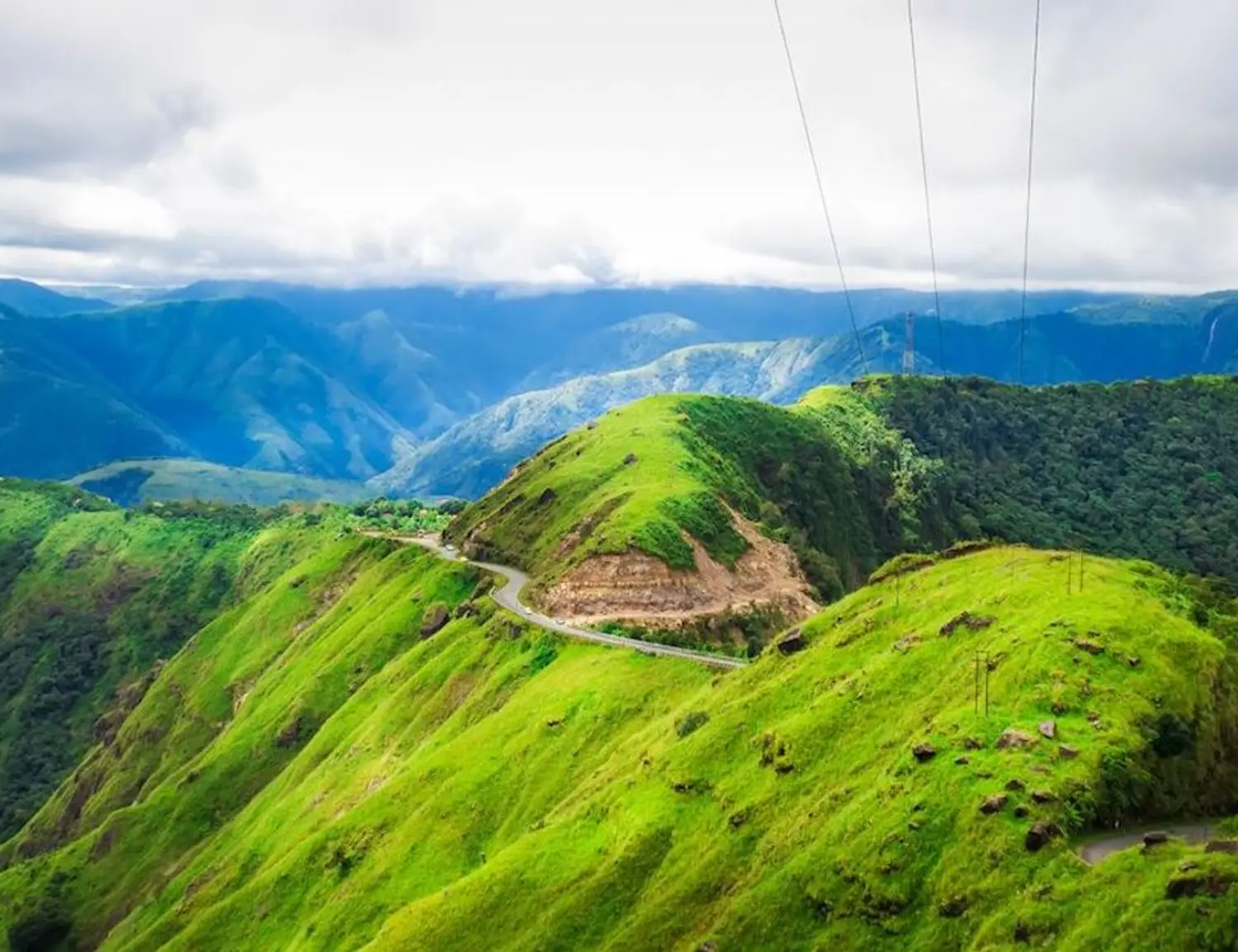
Guided Enthralling Meghalaya Bike Tour
11 daysfrom$2,495/person
